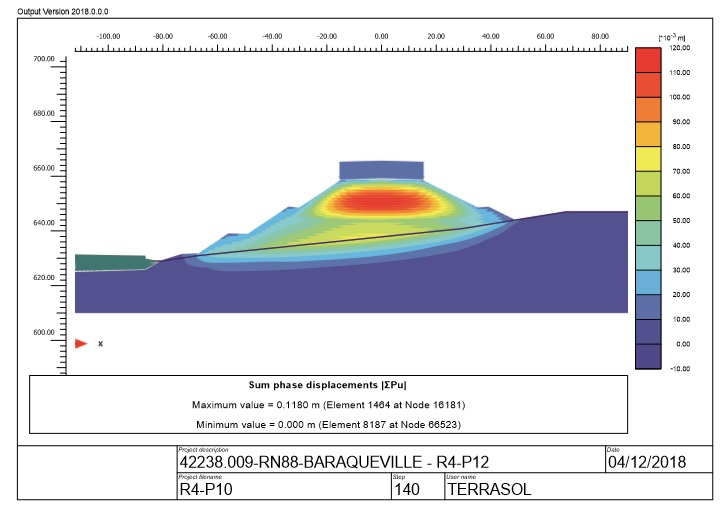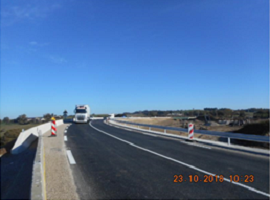With a length of 14.3 km, the Baraqueville bypass (Aveyron) requires the construction of five “high-rise” embankments (as defined in the guide of Road Earthworks, “Guide des Terrassements Routiers”).
This type of embankments, with a height greater than 10/15 m, do not only present challenges related with berms stability, settlements and punching.
It is crucial to also consider the internal deformations governed by the hydric evolutions within these unsaturated materials. Indeed, the deformations of the embankment related to the variations of the hydric states are not specific to large embankments; but for these, the energy used for compaction is lower than the loading effect of the overlying layers in the final situation, meaning that the amplitudes of these deformations can be significant (“initial loading” situation).
Conventionally, safety with respect to this limit state is achieved by using, at the base of the high embankments, either non-evolving and waterproof materials (severely missing in the bypass’ excavated materials) or materials reinforced with binders.
TERRASOL, as part of the geotechnical diagnostic and design assignment entrusted by DREAL OCCITANIE, assisted the South-West Interdepartmental Roads Department on the design of these embankments, which includes:
- The definition of the area that requires implementation specifications, based on laboratory mechanical tests;
- The definition of possible optimized treatment solutions for the bottom part of the embankment.
Terrasol’s achievments
- The definition of the area that requires implementation specifications;
- The definition of possible optimized treatment solutions for the bottom part of the embankment.
 Agent Access
Agent Access 





